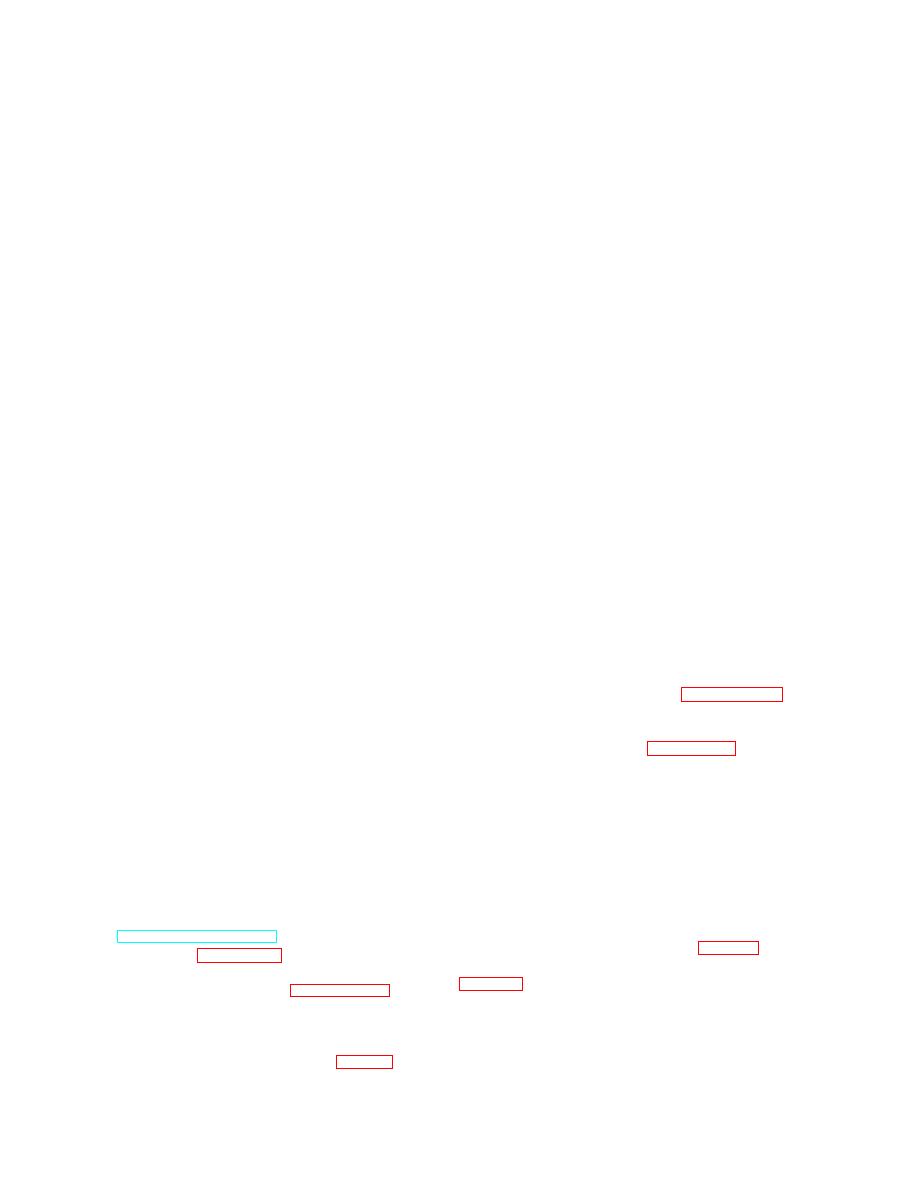 |
|||
|
|
|||
|
Page Title:
Section II. FUEL SYSTEM |
|
||
| ||||||||||
|
|
 each end of the wire. If the meter shows no in-
(4) Uncouple connectors in front of the
operator's panel.
dication, t h e wire is defective and should be
repaired or replaced (d or e b e l o w ) .
(5) Disconnect wires from overspeed governor
and oil pressure sending unit.
d . Repair. Shave the insulation on the wire to
expose one-half inch of bare wire at both ends of the
( 6 ) Disconnect wires from starting motor,
generator, and voltage regulator.
break. Twist the bare wire together and solder the
connection. Cover the repaired break with electrical
( 7 ) R e m o v e t h e necessary clamps and
tape and friction tape. Do not leave any bare wire
mounting hardware that secures the wiring harness.
e x p o s e d . If a terminal lug breaks from a wire,
g. Installation.
replace it with an exact duplicate.
(1) Install wires on the starting motor,
e. Replacement. Replace a wire by disconnecting
generator, and voltage regulator.
it from the component or components to which it is
(2) Install the wires on the overspeed governor
attached and remove the wire. Install a new wire
and oil pressure sending unit (TM 10-3930-243-
and connect it to the component or components. If
12).
a broken wire is part of a harness, disconnect the
( 3 ) Install the connectors in front of the
w i r e at each end and tape the loose ends with
operator's panel.
electrical tape. Install a new wire and attach it to
(4) Install wires on overhead guard spotlight,
the outside of the wiring harness.
w a r n i n g buzzer horn, a n d horn connections at
f. Removal.
steering column.
(1) Disconnect wires from the instrument
(5) Install wires at headlights, marker lights,
panel.
blackout lights, and taillights.
(2) Disconnect wires from headlights, marker
(6) Install wires at instrument panel.
lights, blackout lights, and taillights.
(7) Install the necessary clamps and mounting
hardware that secures the wiring harness.
( 3 ) Disconnect wires from overhead guard
s p o t l i g h t , warning buzzer, horn and horn con-
nection at steering column.
Section II. FUEL SYSTEM
3-12. General
(2) Inspect tube assembly (10) for dents and
breaks.
The diesel engine fuel system consists of the fuel
(3) Inspect spring (4) for breaks or bends.
i n j e c t o r s , fuel pump and fuel tank. A restrictor
(4) Inspect all hardware for damage. Replace
f i t t i n g is located in the left cylinder head to
a defective part.
maintain pressure in the fuel system. Three rocker
arms are provided for each cylinder; the two outer
r e a s s e m b l e the injector control lever and tube
arms operate the exhaust valves and the center arm
assembly.
operates the fuel injector.
fuel injector control lever and tube assembly.
Assembly
g. Control Lever Adjustment.
a. General. Each injector control rack is actuated
by a lever on the injector control tube which, in
NOTE
The letter R or L indicates the injector location in the
turn, is connected to the governor by means of a
right or left cylinder bank, viewed from the rear of
fuel rod. The levers can be adjusted independently
engine. Cylinders are numbered starting at the front
o n the control tube, thus permitting a uniform
of the engine on each cylinder bank. Adjust number
setting of all injector racks.
3L injector rack control lever first to establish a guide
b. Removal.
for adjusting the remaining levers.
(1) Remove the engine hood and rocker arm
(1) Disconnect the linkage attached to the
cover (TM 10-3930-243-12).
governor speed control lever (4, fig. 3-13).
(2) Refer to figure 3-18 and remove the fuel
(2) Turn the idle speed adjusting screw (10,
injector control lever and tube assembly.
from the lock nut (9).
disassemble the fuel injector control lever and tube
assembly.
NOTE
d. Inspection.
This adjustment lowers the tension of the low speed
(1) Inspect the control lever (12, fig. 3-19) for
spring so it can be depressed, while closing the low
cracks, bends and excessive wear.
speed gap, without bending the fuel rods.
|
|
Privacy Statement - Press Release - Copyright Information. - Contact Us |